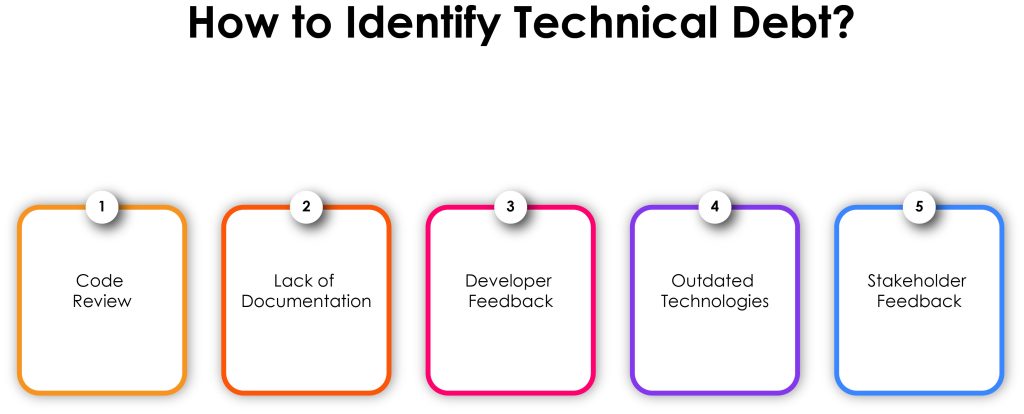If your development time gets slower over time or you’re encountering an increasing number of unexpected bugs or failures, it’s strongly indicated that your team might be suffering from technical debt. Even if you’re a newbie to the software industry, it is crucial to have a good understanding of technical debt.
In this comprehensive guide, we’ll take a deep dive into technical debt, exploring what it is, how to identify it, how to measure it and manage it effectively to keep your project on track.
What is Technical Debt?
Technical debt, also known as tech debt or code debt, defines the cost of additional work required when your team prioritizes speedy delivery over quality. This often occurs when your team is in a rush to launch a new feature and is careless about generating clean, maintainable, and scalable code.
Technical debt can be caused by several reasons such as tight deadlines, lack of understanding, skipping tests, changing requirements, and outdated technologies. It slows the entire development process and creates risks when including new features.
Recognizing the Indicators of Technical Debt
Identifying technical debt involves spotting specific areas of the codebase where short-term solutions or compromises have been made that may cause scaling or maintenance issues in the future.

Code Review
Regular code review is one of the powerful approaches to detect technical debt. Check your codebase of duplicate code, comment-heavy code, and code complexity. For example, functions and classes containing too many things and large in size make it hard to understand and maintain.
Lack of Documentation
If your codebase doesn’t have enough documentation or comments, it can lead to misunderstanding, especially when new team members are onboarding. Missing or outdated documentation can cause technical debt. Fortunately, tools like inno.navi offer great support in this case, generating crystal clear documentation automatically with a single click.
Developer Feedback
Developer feedback is another indicator of technical debt that allows you to collect feedback from active team members of the project. You can arrange regular meetings or feedback sessions to gather valuable feedback to improve the current working process.
Outdated Technologies
Check if your project relies on outdated technologies such as libraries, frameworks, or plugins. Outdated technologies can raise integration issues and security vulnerabilities when merging with new technologies.
Stakeholder Feedback
Feedback from stakeholders is crucial to create a user-friendly and efficient system. Frequent compliments from the user, customer, and stakeholders like poor performance, or slow updates carry a sign that the project is affected by technical debt.
Key Metrics for Measuring Technical Debt
Found technical debt! Let’s measure how much effective this is for your codebase. You can follow these techniques to measure technical debt.
Code Complexity Metrics
Code Complexity Metrics is a strategy to measure the number of linearly independent paths through a program. Higher complexity in code indicates more potential bugs and more difficult maintenance. You also need to measure how difficult the code is for new team members to understand. Complexity in understanding the code may cause technical debt during new team member onboarding.
Code Quality Tools
Code analysis tools like CodeClimate, SonarQube, and ESLint offer automated code quality analysis, measuring the technical debt by flagging potential bugs, duplication, code smell, and security issues. These tools provide a “Technical Debt Ratio” that indicates the time required to fix these issues relative to the time spent writing the code. A higher technical debt ratio indicates significant technical debt.
Defect Density
If your codebase contains high bug frequency or recurring issues in a specific portion of your code, it can be a sign of technical debt. Increasing time to fix a bug or issue can also be a sign of technical debt. It suggests that the code is more difficult to work with, slowing down the bug resolution.
Code Churn
Code Churn means the amount of code being rewritten or modified over time. If your codebase contains high code churn in specific areas, it signals a technical debt, indicating those areas may need restructuring or refactoring.
Dependency Analysis
If your codebase uses outdated, unsupported, or deprecated libraries or frameworks, there is a high risk that it can form a technical debt.
Code Review Time
If the codebase isn’t reviewed longer over time, this could point to an increasing amount of technical debt. If your codebase is complex and unstable, reviewing requires more effort and time.
Best Practices to Manage Technical Debt
Once you detected and measured the technical debt. You can follow these effective best practices to manage technical debt.
Acknowledge and Document Technical Debt
Maintaining a technical debt backlog alongside your regular product backlog is an effective approach to handling technical debt. You can use tools like Trello, Jira, or GitHub in this case to track the specific part of the code that has the technical debt. Prioritize the debt that needs to be addressed urgently (e.g., security vulnerabilities).
Establish Code Quality Standards
Ensure that the team maintains consistent coding standards to prevent new technical debt. These coding standards could include rules for naming conventions, structuring code properly, and indentation. Tools like SonarQube or ESLint allow you to enforce coding standards by automated code analysis.
Automated Testing and Deployment
Sometimes refactoring or fixing technical debt may introduce new bugs or issues. Having comprehensive test suites such as unit tests, integration tests, and end-to-end tests helps you to prevent this kind of situation. Tools like Jenkins, Travis CI, or GitLab let you ensure that changes do not break the build or other parts of the system. SonarQube and CodeClimate are two powerful tools that automatically scan the codebase to identify code smells, security vulnerabilities, and maintainability issues.
Maintain Clear Documentation
Inconsistent or outdated documentation is a breeding ground for technical debt, especially when new team members are onboarding. Ensure that your codebase contains clear, concise, and up-to-date documentation or comments alongside your code. Prefer using clear and readable code that minimizes the need for extensive comments.
Use Modern Development Practices
Using modular-based architecture, you can avoid significant technical debt. Modular-based architecture breaks the code into smaller independent pieces that are easier to maintain and refactor. By leveraging microservices or smaller, self-contained services, you can limit the spread of technical debt.
Continuous Monitoring
Make technical debt management a part of your regular development process. You can perform periodic audits of the codebase, ensuring new debt isn’t arising. Scheduling dedicated refactoring spints helps you to focus on improving code quality and reducing technical debt.
Make Your Codebase Healthy
Technical Debt is an unavoidable part of software development. Effectively managing technical debt ensures the long-term sustainability of your project. It helps you to strike a balance between delivering faster and maintaining a robust, scalable codebase.
We provided a brief insight into technical debt through this article, exploring the process for identifying and measuring technical debt and sharing the best practices to manage technical debt.
If you have any questions or need any further assistance, feel free to contact us. We’ll be happy to assist you.



Somebody essentially lend a hand to make significantly posts I might state That is the very first time I frequented your web page and up to now I surprised with the research you made to create this particular put up amazing Excellent job
Thanks!
Somebody essentially help to make significantly articles Id state This is the first time I frequented your web page and up to now I surprised with the research you made to make this actual post incredible Fantastic job